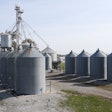
Peter Schneider, a swine veterinarian in Iowa, discussed his personal experience of a U.S. Food and Drug Administration (FDA) inspection on his family’s 1,200-sow farrow-to-finish operation during the Veterinary Feed Directive (VFD) Audit Process Q&A webinar hosted by GlobalVetLINK on May 9.
“All audits will go through similar steps through the pathway of inspection,” Schneider said. The initial step will be at the feed mill. All the feed mill investigations will be unannounced. This is a sure way to make sure that feed mills are complying with FDA rules without giving them time to prepare or adjust their typical processes. The FDA will ask to see many different VFDs that have been given through that feed mill.
The second step is for the inspectors to choose a couple of the VFDs given to follow through on at the veterinarian level. The veterinarian and producer investigations will be announced, but the entire inspection will be done in the same day or within 24 hours, he said.
“The FDA will call the veterinarians and say. 'We have some VFDs that you have issued, and we’d like to go ahead and follow through with those on your end to see what your compliance is like,'” Schneider said.
From there, investigators will move to the producer.
“When inspectors showed up on our farm, we kind of knew what was going on,” he said. Two investigators arrived — one from FDA, the other from the Iowa Department of Agriculture and Stewardship. The FDA includes state organizations to garner resources that they do not have on their own.
“The investigation processes itself was really pretty simple,” he said. They asked to see the VFDs that were associated to those found at the feed mill, then they reviewed them and gave feedback. In Schneider’s experience, the inspection lasted a little less than an hour.
“I would guess that for most folks, their experience would be pretty similar,” he said.
FDA inspection list
The FDA has a VFD inspection list that they go through and check. It includes separate sections for the different entities that are required in the VFD inspection. Records are supposed to be kept for two years.
“For distributors, they want to see that the different directions for the VFD were followed and that the appropriate drug and drug level were delivered to the farm,” Schneider said.
They also want to see that the veterinarians have a valid license in the state in which the VFD was issued and that the vet had a veterinarian-client-patient-relationship (VCPR) in place for the client for which the VFD was issued.
The client must make sure the outline from the VFD was followed in terms of correct feeding methods and making sure withdrawal periods were followed, and also making sure that the VCPR is in place on their end.
Schneider explained that his experience should be like most, but where some may see a difference is on the feed mill end. Most feed mills will have to pull records for multiple clients working with various vets.
















